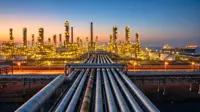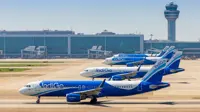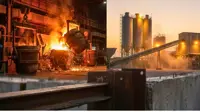BP oil spill report holds itself, Transocean and Halliburton responsible
09 Sep 2010
No single factor caused the Gulf of Mexico oil spill. Rather, it was a sequence of failures involving a number of different parties led to the explosion and fire which killed 11 people and caused the world's worst oil spill, says British petroleum giant, BP.
The report, released by BP yesterday concludes that decisions made by multiple companies and work teams contributed to the accident, which it says arose from a complex and interlinked series of mechanical failures, human judgments, engineering design, operational implementation and team interfaces.
The report, based on a four-month investigation led by Mark Bly, BP's head of safety and operations and conducted independently by a team of over 50 technical and other specialists drawn from inside BP and externally found that the blame lay with its own engineers for a fatal drilling disaster as well as rig owner Transocean Ltd and cementing contractor Halliburton.
BP's report reveals:
- The cement and shoe track barriers-and in particular the cement slurry that was used at the bottom of the Macondo well, failed to contain hydrocarbons within the reservoir, as they were designed to do, and allowed gas and liquids to flow up the production casing.
- The results of the negative pressure test were incorrectly accepted by BP and Transocean, although well integrity had not been established.
- BP said that over a 40-minute period, the Transocean rig crew failed to recognise and act on the influx of hydrocarbons into the well until the hydrocarbons were in the riser and rapidly flowing to the surface.
- After the well-flow reached the rig it was routed to a mud-gas separator, causing gas to be vented directly on to the rig rather than being diverted overboard.
- The flow of gas into the engine rooms through the ventilation system created a potential for ignition, which the rig's fire and gas system did not prevent.
Even after explosion and fire had disabled its crew-operated controls, the rig's blow-out preventer on the sea-bed should have activated automatically to seal the well. But it failed to operate, probably because critical components were not working.
Commenting on the report, which he commissioned immediately after the Macondo explosion, BP's outgoing chief executive Tony Hayward said, "The investigation report provides critical new information on the causes of this terrible accident. It is evident that a series of complex events, rather than a single mistake or failure, led to the tragedy. Multiple parties, including BP, Halliburton and Transocean, were involved.
"To put it simply, there was a bad cement job and a failure of the shoe track barrier at the bottom of the well, which let hydrocarbons from the reservoir into the production casing. The negative pressure test was accepted when it should not have been, there were failures in well control procedures and in the blow-out preventer; and the rig's fire and gas system did not prevent ignition.






















